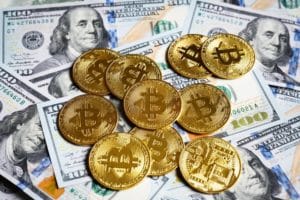
Yesterday Bitcoin’s market price briefly fell as low as $22,500, but today it seems to have recovered somewhat.
It actually touched $23,800 yesterday, so from the daily high to the daily low it lost about 5.5%, but today it has climbed back up to above $22,800, returning close to $23,000.
In fact, the price to watch these days seems to be specifically $23,000.
The price of Bitcoin from the last 10 days to today
In this first month of 2023, Bitcoin’s market value rose to $23,000 for the first time on 21 January, after a 38% climb in the previous 20 days.
Indeed, 2022 closed at $16,500 which is a figure not much higher than the annual low of $15,500 touched on 10 November.
In truth, the real ascent began only on 10 January, because on the 9th it still had not approached $17,500.
Thus there were only 11 days of ascent, with a 30% increase in value.
In the following ten days, namely from 22 January until today, the price has not risen again, although on Sunday 29 January, it came close to $24,000.
Practically in the last ten days, Bitcoin’s price has been lateralizing around the fateful $23,000 mark that should be kept an eye on right now.
The question that many are asking is whether the price of Bitcoin at this time has the strength to push up to $25,000, or whether it will fall back well below $23,000. Yesterday it actually tried to fall, but in the night it rebounded.
The difference could be made by the data to be announced tomorrow regarding the Fed’s decision to either raise or not raise interest rates in the US.
The bottom
According to yesterday’s Bitfinex Alpha report, the bottom for Bitcoin’s value may be behind us.
The key point highlighted in the report is that there have been eight consecutive daily green candles, all the way back to 14 January, and going back as far as 2015, this seems to indicate rather clearly that the bottom of this cycle may have been right around $15,500 in November 2022.
Another important point is the fact that short-term Bitcoin holders are selling BTC at a profit on spot markets, but long-term holders are not. In particular, the Spent Output Profit Ratio (SOPR) for short-term holders remains above the equilibrium level, but that of the HODLers does not.
The report also warns that although Bitcoin’s historical technical data appear to be positive, BTC’s market value instead seems increasingly correlated with that of the US stock market.
The ghost of recession
The ghost of recession continues to hover over the US stock market.
The Bitfinex Alpha report states that the series of interest rate hikes the Fed has decided to make in recent months is having the effect of slowing the economy, as evidenced by a number of indicatiors, including declines in business activity and personal consumption.
Combine this with the fact that inflationary forces appear to be taming, markets expect few more rate hikes, so much so that the market value of Bitcoin and other risk-on assets have remained relatively stable over the past week.
The report primarily highlights data on the US labor market, considered a critical determinant of the Fed’s monetary policy, as the monthly unemployment claims report is a solid predictor of the economy’s strength.
Data regarding fourth quarter GDP released last week seemed to indicate that recession had been avoided, but other data on sales and exports reveal that growth is actually anemic.
This is why it is worth being cautious, and keeping an eye on the Labor Cost Index in particular, because it could portend a slowdown or even a pause in the Fed’s series of rate increases. Indeed, it is difficult for the US central bank to afford to further tighten its already largely restrictive monetary policy if it would hurt employment.
The situation is therefore uncertain, even though in some ways it may look good, so much so that it is difficult to predict precisely how the price of Bitcoin might react to the data coming out in the next few months.
If nothing else, it seems to have finally emerged from the bear market that caused its market value to drop 77% over the past year. While this in no way means that a new bear market cannot eventually be triggered, it does give the idea that that dynamic dominated by fear and pessimism that dominated 2022 has now dissolved.




















